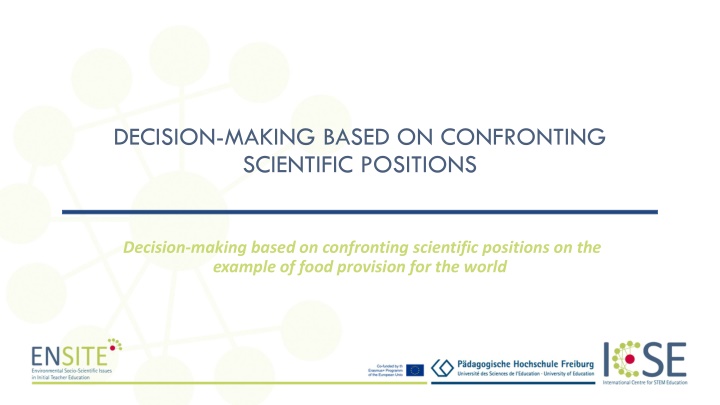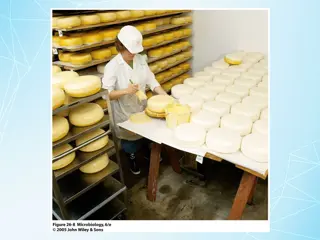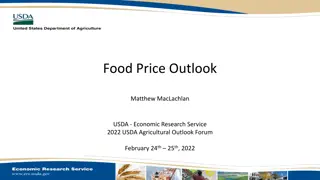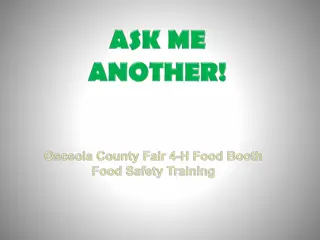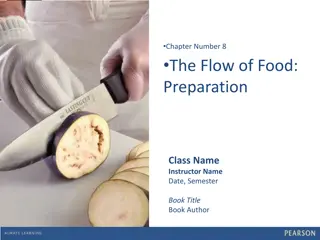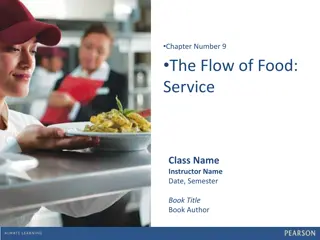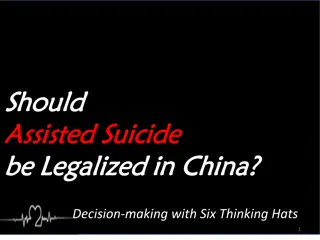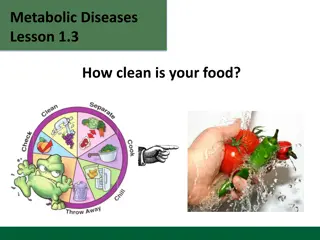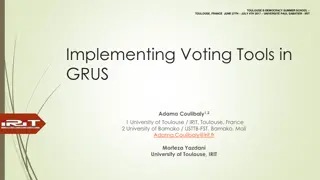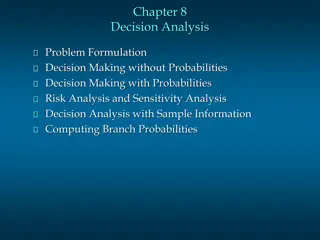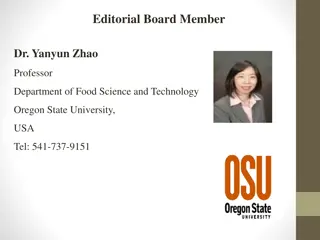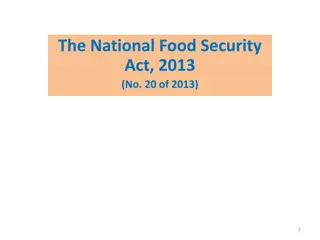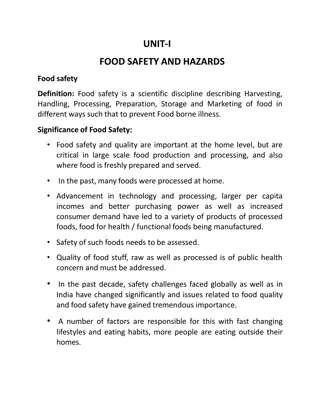Decision-Making in Food Provision for the World
This module focuses on decision-making based on confronting scientific positions in the context of providing food for the world. It covers different strategies, understanding the process, examples, reflection, beliefs, and real-life cases related to food consumption. The module also emphasizes active citizenship, teaching experiences, and readiness to include decision-making in day-to-day teaching.
Download Presentation

Please find below an Image/Link to download the presentation.
The content on the website is provided AS IS for your information and personal use only. It may not be sold, licensed, or shared on other websites without obtaining consent from the author.If you encounter any issues during the download, it is possible that the publisher has removed the file from their server.
You are allowed to download the files provided on this website for personal or commercial use, subject to the condition that they are used lawfully. All files are the property of their respective owners.
The content on the website is provided AS IS for your information and personal use only. It may not be sold, licensed, or shared on other websites without obtaining consent from the author.
E N D
Presentation Transcript
DECISION-MAKING BASED ON CONFRONTING SCIENTIFIC POSITIONS Decision-making based on confronting scientific positions on the example of food provision for the world
D Decision ecision- -making based on confronting making based on confronting scientific positions scientific positions ENVIRO SSI Science Society
Learning Learning outcomes outcomes (I) (I) Decision Decision- -making in food market making in food market Different strategies for decision-making Understanding of decision-making process, i.e. steps needed to be carried out, evaluation of conditions, results, and consequences Examples of decision-making strategies connected with food-world Reflection on specific characteristics of decision-making strategies and their relation to mathematics and science education Beliefs on decision-making in relation to food market and their influence on human being Examples of own decision-making cases from everyday life connected with food consumption
Learning Learning outcomes outcomes (II) Decision Decision- -making in food market making in food market Skills to compare different ways of dealing with decision making. i.e. acting in the sense of active and critical citizenship versus ignoring evidence and following leaders on examples from food-world Reasons for including decision-making in science education Experience in decision making in classroom teaching: an example with food topic for use on secondary level Reflections on what students learn when dealing with such a task Readiness to include decision-making in day-to-day teaching First introduction into pedagogical concepts for dealing with topic decision making (II)
Structure of the module Structure of the module Three sessions Introduction warm-up activities Immersion context activities role play activities Application activities with practical orientation experimental activities including | 5
Types of Activities Types of Activities Working with information sources Brainstorming and brain writing activities Story telling as support of communication Role playing as support of communication Practical (incl. experimental) activities as evidence based (science) communication | 6
Structure of session I. Structure of session I. Introduction Introduction Activity 1.1. Evocation Free writing about phenomena decision making based on pictures about food To add Title and Short description to elected picture Activity 1.2 Mapping the field of interest Brainstorming activity with central term FOOD or FOOD CHOICE Clustering and concept mapping | 7
Structure of session II. Structure of session II. Immersion Activity 2.1. Decision making about food as multi context phenomenon Contexts related to phenomenon: Sensory assessment, Content assessment, Tradition in use, Advertising influence, Following the leaders, Packaging, Branding, Costs limits, Own beliefs about Application of snow-ball method, using of cards ( food cards ) Immersion | 8
Structure of session II. Structure of session II. Immersion Activity 2.2. My decision to buy a food Theories behind of Buying Behavior Generic Theory of Buying Behavior the buyer will initiate research on products and pricing Cultural Theory of Buying Behavior set of values and beliefs learned in the context of a community Environmental Theory of Buying Behavior behavior based upon the situation Internal Theory of Buying Behavior decision by kind of personality Creation and application of questionnaire or interview (research questions, items, sample, data elaboration, publishing) Immersion | 9
Structure of session II. Structure of session II. Immersion Immersion Activity 2.3 Food market and food consumption in different countries (regions, cultural customs, religions ) Identification of natural (science elements) and social (cultural elements) and ecological (global ecological elements) contexts of the food market and food consumption Application of information sources analysis Inscenations, dramatization Exhibition of products, competition Cultural context (f2f or on-line) | 10
Structure of session III. Structure of session III. Application Application Activity 3.1 Decision making about food in numbers Analysing of different numbers about decisions Food consumption in different part of the world (e.g. per country, per capita, per age group; consumption in household, numbers of production, numbers of waste etc.) Calculation of different footprints connected with different products and activities (connected with comparison food needs in different part of the world) Calculation of food consumption in different areas and what we can do with these calculations (calculations connected with food production, transport, consumption and waste) | 11
Structure of session III. Structure of session III. Application Application Activity 3.2 Decision making for food storage and transportation Storage (expiration, durability etc.) and transportation (distances, needs, hidden bussiness etc.) to prepare own product in form of mind map flowchart lab manual for model experiment and show and discuss it in classroom or in wider forum. | 12
Structure of session III. Structure of session III. Application Application Activity 3.3 Decision making about food in confrontation of different contexts Preparation and consumption of food in history and in current situation and also in prognosis for the future in view of different cultures Science context (contents, mechanical, physical, chemical and biological properties) Social context (culture, history and nowadays and future, fair trade, solidarity etc.) video The Hidden Costs of Hamburgers | 13
Structure of session III. Structure of session III. Application Application Activity 3.4. Decision making about food in simple science experiments To propose, to realise and to interpret experiments with food Food as multi component objects (chemical content, physical properties, biological activity, paradoxes, coherency etc.) Food cleaning (filtration, crystallization, destilation, etc.) Food conservation (chemicals, procedures, etc.) Food as power of life (energy consuption, energy production, energy conservation etc.) | 14
D Decision ecision- -making based on confronting making based on confronting scientific positions scientific positions OR/AND??? Society Science THANK YOU FOR YOUR ATTENTION AND COOPERATION!
